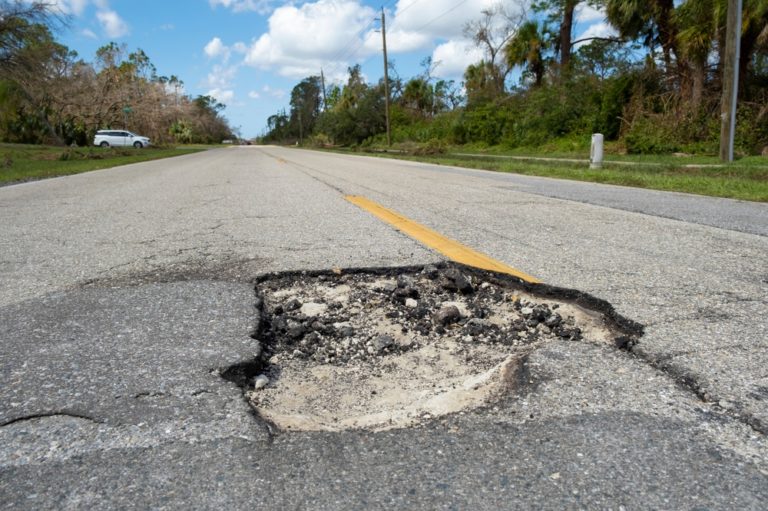Personal Injury Lawyer is vital in winning settlements and awards for injury victims. Insurance companies spend vast sums of money on legal defense. Their lawyers focus on finding reasons to avoid paying claims and reduce any settlements or awards. Without a personal injury attorney, most injury victims would find themselves with inadequate or no compensation.
The Personal Injury Lawyer’s primary functions include gathering and evaluating evidence, negotiating settlements, and representing clients in court. At each stage of the process, from the initial consultation through trial, personal injury attorneys help their clients win their cases.
The Initial Consultation in Kamuela
Your relationship with a personal injury lawyer begins with the initial consultation. During this meeting, you explain the situation to the attorney, who then asks questions to clarify what happened. Based on this, the lawyer analyzes your situation and provides an opinion on your legal position.
With an understanding of the case and issues involved, the Personal Injury Lawyer can tell you if you have a strong case and whether you are likely to collect from the defendant. In most cases, the at-fault party’s insurer bears the financial responsibility, making it possible for you to receive a settlement or award even if the defendant is indigent.
If the attorney believes you have a valid legal case and can collect on a judgment, he will offer to take your case on a contingency basis. Contingency fees require the client to pay only when a settlement or judgment is received, with the legal fees coming directly from the proceeds.
How Contingency Fees Help You Win Your Case in Kamuela
Insurance companies have deep pockets and use them to protect their interests. They invest heavily in legal defense. Even when the evidence clearly shows that their customer bears legal liability, they may fight the case as a settlement negotiation strategy or to convince the court to award a lower amount.
As a result, most personal injury claims involve extensive litigation. The insurance company can afford to battle claims through trials and appeals, while few individuals have the financial wherewithal to front legal fees ranging from tens- to hundreds of thousands.
Without contingency fees, wealthy insurance companies would have an unfair advantage over pedestrian accident victims. Because they can ill afford astronomical legal costs, plaintiffs would have little choice but to accept the insurance company’s initial offers, which are always lower than the damages the victim is entitled to under the law.
Worse, insurance companies could deny valid claims, leaving most injury victims in the impossible position of funding a lawsuit out of pocket.
Contingency fees level the playing field. By relieving the plaintiff of the burden of out-of-pocket legal fees, they make it possible for accident victims to take insurance companies to court and litigate as long as necessary to negotiate an equitable settlement or win an award that fully compensates for all their damages.
Deferred legal fees also give plaintiffs negotiating leverage. Insurers must pay hefty legal fees to litigate a case. When it becomes apparent to them that they face losing at trial, they need to cut their losses by offering an attractive settlement.
Because plaintiffs pay nothing upfront, fees do not pressure them to settle the case early. Plaintiffs can continue litigating and cost the insurance company far more in legal fees, giving them negotiation leverage.
Gathering Evidence
Winning a personal injury case requires plaintiffs to prove their contention by a preponderance of the evidence. A preponderance of the evidence means it is more likely than not to be true. This standard is far easier to meet than the reasonable doubt requirement for criminal cases. Nonetheless, plaintiffs must have substantial evidence to win.
Personal injury attorneys investigate their client’s claims to develop the proof needed to win in court. Many types of evidence are admissible in a personal injury case, such as witness statements, accident reconstructions, expert witnesses, video and audio recordings, official reports, medical records, and other proofs.
During the opening stages of the case, your personal injury team will gather as much evidence as possible to bolster your claim. In addition, the discovery process provides more opportunities for attorneys to collect evidence.
Building a Case During Discovery in Kamuela
Discovery occurs at the beginning of a lawsuit. During this process, Personal Injury Lawyers must share their evidence with the other side. Courts allow no surprises. All evidence must be disclosed before trial.
Often, the defense has possession of evidence beneficial to the plaintiff. For example, a truck driver who struck a pedestrian may have had a dash cam in the cab that recorded the accident. In that case, the plaintiff can compel the production of this recording and use it in court.
Discovery follows a linear process that starts with sharing documents and physical evidence. Following that, lawyers develop further evidence by questioning the other side’s witnesses on paper and in depositions.
Each side sends the other’s witnesses written requests for admissions. These requests state the case’s material facts and require the respondent to affirm or deny the statement. For example, in a pedestrian accident case, the plaintiff’s lawyers may require the defendant to affirm or deny that he was driving the vehicle when it struck the victim.
By compelling these answers, lawyers begin tying the witnesses to a story, which they can then seek to disprove if the evidence contradicts their statements. As a result, both sides thoroughly understand what witnesses will testify to at trial.
Lawyers develop further evidence through interrogatories. Interrogatories consist of written questions that the respondent must answer under oath. These answers help lawyers prepare for depositions.
The discovery process culminates with depositions. Depositions consist of face-to-face interviews of the other side’s witnesses. Lawyers use these sessions to tease out information and admissions that strengthen their cases.
Cases frequently settle shortly before or after depositions. Depositions increase legal costs, giving insurance companies the impetus to settle. Also, after depositions, insurers frequently find that their case has been substantially weakened, making settling the case imperative.
Negotiating a Settlement With the Help of a Personal Injury Lawyer
The vast majority of personal injury cases end in a settlement. This occurs for two primary reasons. Firstly, personal injury lawyers screen their cases to ensure they can stand up in court. Secondly, insurance companies know that litigating cases is tremendously expensive. Therefore, when they are likely to lose, their cost-benefit analysis indicates that continuing to trial will only increase their financial burden.
But insurers only agree to a large settlement with a personal injury lawyer building a solid case. As a result, settlements tend to occur when personal injury lawyers have developed sufficient evidence to convince the other side it is fighting a losing battle.
In some cases, settlement talks start before the plaintiff files the lawsuit. For example, the insurance adjuster may present an injured party with an initial offer. These offers are negotiable, so injured people should resist the temptation to take an easy settlement because it will likely be low.
Instead, it’s advisable to have any offer reviewed by a personal injury attorney. The lawyer can estimate your damages and whether you have any liability for the incident that reduces your award eligibility. In most cases, your attorney will find that the initial offer leaves you under-compensated.
However, that does not necessarily mean the case must proceed through the lengthy legal process. Sometimes, with encouragement from a personal injury attorney, the insurer raises the initial offer into the attractive range, saving you the need for a court battle.
On the other hand, insurers pour large portions of their budgets into legal defense. They do this because they hope their lawyers can reduce payouts by contesting cases and forcing a lower settlement. For example, they may contend that the plaintiff is due a lower amount because he bears partial responsibility for the accident.
Timing is a critical factor in settlement negotiations. Specific points during a lawsuit lend themselves to more productive settlement negotiations.
As discussed above, many cases settle during the discovery process. Personal injury lawyers can develop evidence during discovery that motivates the other side to settle the case. However, sometimes insurance companies remain intransigent despite solid proof in the plaintiff’s favor, causing a breakdown in negotiations and requiring the plaintiff to continue litigation.
When a settlement fails to materialize during discovery, negotiations often resume around the time of the defendant’s motion for summary judgment. Defendants file these motions to convince the court to throw the case out before it ever reaches a jury.
To succeed, they must demonstrate that the defense should win the claim based on undisputed facts. However, the summary judgment motion fails if the plaintiff and defendant disagree on material facts.
For instance, the defense may contend the accounts of the plaintiff and defendant are the same and, based on these statements, the plaintiff failed to prove the case. However, the plaintiff’s lawyer is likely to argue that the plaintiff and defendant disagree about what happened and, according to the plaintiff’s version, the defendant has liability.
The court can render no judgment without a trial when the parties disagree. If the parties cannot settle out of court, the court must impanel a jury to decide which version of the incident to believe.
Unsurprisingly, many settlements occur around the time of summary judgment motions. Either side may have concerns about the court’s decision, inciting them to settle. For example, during depositions, witnesses may have made statements about a summary judgment motion, motivating lawyers to conclude the case before the judge rules on the motion.
As the trial approaches, the Personal Injury Lawyer on either side may become more amenable to settling. The defense may fear a big jury verdict, while the plaintiff’s side may fret that the jury could severely reduce the award based on comparative negligence.
In many situations, the judge orders a pre-trial settlement conference. During this meeting, each side can present its viewpoint, and a magistrate assists as a mediator, often brokering an agreement.
Personal injury lawyers provide services vital to the success of their client’s claims. Winning a personal injury case requires developing the necessary evidence, defining a legal strategy, negotiating based on the case’s strengths, and persuading judges and juries. Olson & Sons personal injury attorneys are experts in building robust cases, negotiating attractive settlements, and winning at trial.
Contact Olson & Sons for a free personal injury consultation.
Related Content: What Is a Personal Injury Case?




